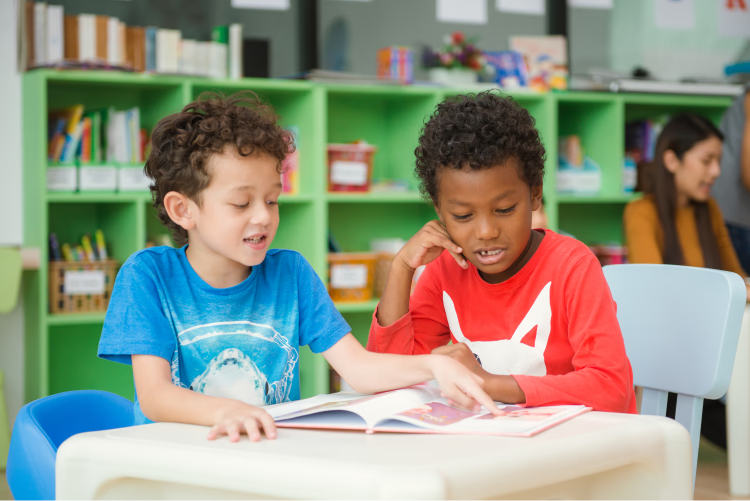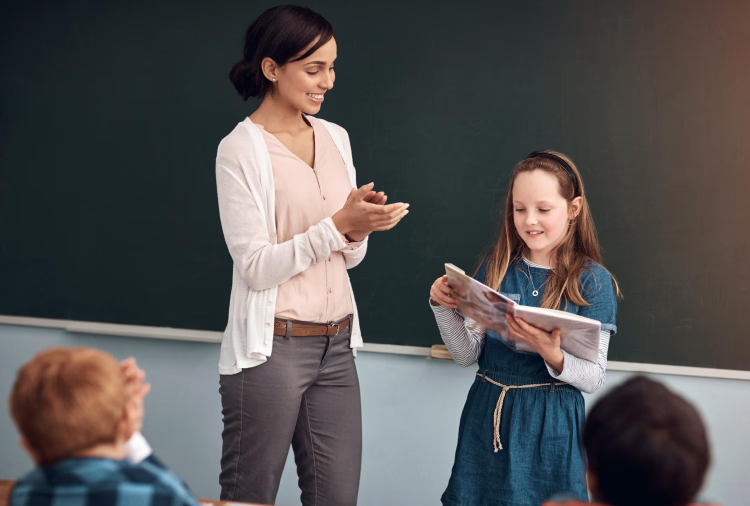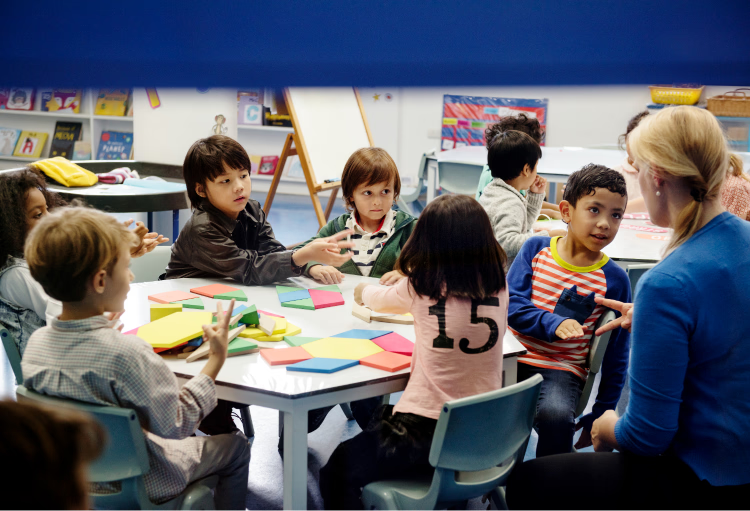In a diverse international classroom in New York, Ms. Carter noticed two of her students facing unique challenges. Diego, a creative student from Mexico, struggled to express himself through reading, while Hana, a Japanese student, felt anxious participating in group activities. To help them both, Ms. Carter paired them for a collaborative project that played to their strengths. Diego used his artistic talents to visually present their ideas, while Hana took the lead in organizing and explaining their work. Together, they supported each other, building confidence and enhancing their skills in a meaningful way.
This simple act didn’t just help Diego and Hana—it transformed the classroom. Students began celebrating each other’s strengths, fostering acceptance and growth. This captures the true meaning of inclusive education: ensuring that every student, regardless of abilities or background, has the opportunity to learn, grow, and thrive together.
Understanding the importance of inclusive education is essential for teachers preparing for international classrooms. Inclusive education empowers students and fosters collaboration, empathy, and success.
Let’s look at 10 ways inclusive education transforms international classrooms and how you can implement these strategies in your teaching.
Let’s say you have a shy student who struggles to speak up in class. Instead of putting them on the spot, you could create a “think-pair-share” activity. This approach allows students to discuss their ideas with a partner before sharing them with the whole class. It gives the shy student time to gather their thoughts and speak in a safe, supportive environment, helping them feel confident and engaged in the classroom.
The scope of inclusive education involves creating opportunities where every student can contribute, no matter their challenges. In international classrooms, where students come from varied cultural backgrounds, the need of inclusive education is essential for bridging those gaps. It helps students feel connected to each other, creating a community where everyone feels valued and respected. When students feel they belong, their confidence grows, and the entire class thrives.
Inclusive education transforms classrooms into vibrant environments that celebrate cultural diversity. For example, during a “Cultural Exchange Day,” you can invite students to share something unique from their culture, such as a family tradition, a favorite dish, or a meaningful story. These activities spark curiosity and foster deeper understanding and mutual respect among students.
The role of teacher in inclusive education is crucial for guiding these interactions and ensuring that every student feels valued and heard. By encouraging cultural sharing, you help students break down barriers and build empathy. This approach brings the class together, demonstrating how much students can learn from one another’s backgrounds. Through your efforts, the classroom becomes a community of global citizens, where learning goes beyond academics to embrace cultural understanding and collaboration.
Inclusive education plays a key role in fostering empathy among students. Students who collaborate with peers with different abilities or learning styles understand each other’s perspectives and challenges. For example, during a science experiment, a student who struggles to read instructions might work with a peer who explains the steps clearly. In this partnership, the student explaining the instructions builds confidence in their ability to support others, while the student receiving help develops patience and appreciation for collaboration.
The inclusive education meaning extends beyond academics—it focuses on nurturing emotional intelligence and fostering meaningful connections among students, ensuring every learner feels valued and supported.
The importance of inclusive education is evident as students grow not only in knowledge but also in their capacity to empathize with others. This empathy creates a more supportive and harmonious classroom environment, especially in international settings where diverse backgrounds and experiences enrich learning for everyone.
Inclusive education transforms classrooms into vibrant environments where students actively collaborate and learn from one another. For example, during a group project on environmental science, one student may excel at research, another at creating visuals, and a third at presenting ideas. Each student contributes unique strengths, working together to create a well-rounded and successful project. This collaborative approach helps students value each other’s abilities and fosters mutual support and teamwork.
The need of inclusive education becomes evident in these moments. Students strengthen their academic and social skills by encouraging teamwork and learning to cooperate and solve problems effectively. In international classrooms, where students come from diverse backgrounds and experiences, collaborative learning fosters respect, empathy, and deeper connections among peers.
Inclusive education helps students build confidence by allowing them to succeed at their own pace. For instance, a student who feels nervous about speaking in front of the class might start with smaller steps, such as sharing their thoughts with a partner or presenting to a small group. With consistent encouragement and support from their teacher, each step becomes a meaningful opportunity for growth. As students achieve these small milestones, their confidence grows, and they gradually become more comfortable sharing their ideas in more extensive settings.
The role of teacher in inclusive education is to provide steady guidance by offering encouragement, celebrating progress, and helping students overcome their fears. This supportive approach is essential in international classrooms, where students face various challenges. By building self-esteem and fostering inclusion, teachers ensure that every child feels capable, valued, and ready to participate in ways they might not have thought possible.
Inclusive education helps students learn better by incorporating simple and flexible teaching methods. For example, as a teacher, you might cut an apple into equal parts while teaching fractions, showing how each slice represents a fraction. This visual demonstration can help a student struggling with math grasp the concept more easily. Meanwhile, their classmates can discuss and explain the idea, reinforcing their understanding and creating a collaborative learning environment.
The scope of inclusive education lies in its ability to adapt lessons to meet the diverse needs of all students. By using clear and practical examples, teachers ensure that every learner engages with the material in a way that aligns with their unique learning style. This adaptive approach enhances academic outcomes in international classrooms and makes learning accessible, engaging, and enjoyable for everyone.
Inclusive education helps students focus on each other’s strengths rather than their differences, breaking stereotypes and reducing bullying. The inclusive education meaning revolves around creating an environment where every student is respected, supported, and given equal opportunities to succeed. For instance, during a group activity, a student who uses a wheelchair might take the lead in organizing and planning the task. As the group collaborates, classmates come to appreciate their leadership skills and sharp thinking, shifting the focus from physical challenges to individual strengths.
Efforts like these can transform perspectives. As a teacher, your role in fostering teamwork is crucial. By encouraging collaboration and helping students recognize the unique contributions of their peers, you create an environment where everyone feels valued. Over time, such efforts build a classroom culture where stereotypes fade, bullying diminishes, and kindness, respect, and understanding become the foundation.
Inclusive education equips students with the skills they need to thrive in a diverse and interconnected world. For example, during a geography lesson on climate change, one student might share how rising sea levels impact their coastal town, while another describes how pollution affects their city life. These personal stories make global issues relatable, encouraging students to appreciate different perspectives and think beyond their own experiences.
The scope of inclusive education extends to preparing students to adapt, collaborate, and embrace diversity. As a teacher, your role is essential in fostering meaningful discussions that encourage empathy, cultural awareness, and critical thinking. These abilities are vital for success in today’s globalized world, where understanding and teamwork are indispensable.
Inclusive education gives every student a fair chance to succeed, regardless of their challenges. For instance, during a classroom quiz, a student who struggles with writing might be offered the option to answer verbally. This simple adjustment enables them to participate fully without feeling stressed or excluded while the rest of the class continues as usual.
This demonstrates the critical role of the teacher in inclusive education. Teachers observe each student’s unique needs and implement thoughtful strategies to create an equitable learning environment. In international classrooms, where students come from diverse abilities and backgrounds, fairness doesn’t mean treating everyone the same—it means providing each student with the specific support they need to succeed.
The need of inclusive education lies in creating classrooms that function as supportive communities. For example, a student with limited mobility might lead a group project on environmental awareness, using their research skills while classmates handle the physical setup. This approach showcases everyone’s strengths and fosters mutual respect, collaboration, and empathy.
Teachers play a pivotal role by modeling inclusivity and ensuring every student feels valued. When inclusive practices are implemented, classrooms become spaces where differences are celebrated, and students learn to connect meaningfully. Over time, these efforts cultivate a sense of unity and shared achievement.
The importance of inclusive education lies in fostering classrooms where every student feels valued and supported. The role of the teacher in inclusive education is pivotal—they create environments of respect and equal opportunities, ensuring all students can thrive together.
For teachers aiming to teach in international schools, understanding inclusive education is essential. Suraasa’s PgCTL equips teachers with the tools to manage diverse classrooms, adapt teaching methods, and ensure every student succeeds. With the right skills and mindset, you can create a global, supportive learning environment where every child feels seen, heard, and empowered to achieve their full potential.











.avif)




